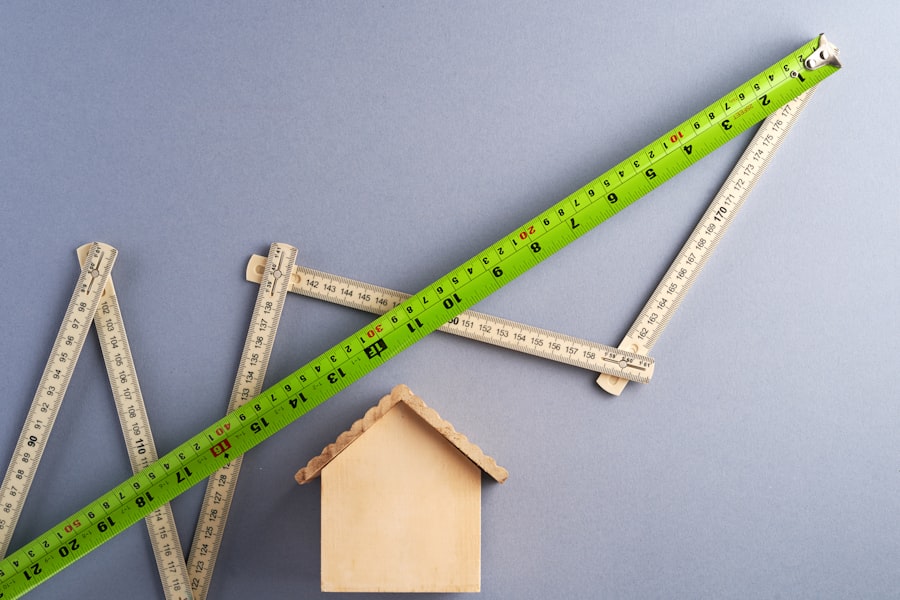The furlong, a unit of measurement that may seem quaint today, has its roots deeply embedded in ancient agricultural practices. You might be surprised to learn that the term “furlong” originates from the Old English word “furlang,” which translates to “the length of a furrow.” This connection to farming is significant, as it reflects the agrarian societies that dominated early human civilization. In those times, farmers needed a standardized way to measure their fields, and the furlong provided a practical solution.
A furlong was originally defined as the distance a team of oxen could plow a straight furrow without needing to rest, which was approximately 660 feet or 220 yards. As you delve deeper into its history, you will find that the furlong was not just a random measurement; it was intricately linked to the land and the labor required to cultivate it. The concept of measuring land in furlongs allowed for more efficient planning and management of agricultural resources.
This unit became essential for farmers who needed to communicate the size of their fields and the amount of produce they could expect. The furlong’s agricultural origins highlight how human needs shaped the development of measurement systems, making it a fascinating topic for anyone interested in history or the evolution of language.
Key Takeaways
- The furlong originated in ancient agricultural practices as a unit to measure land.
- It evolved from farming use to become a standard measurement in horse racing.
- Different cultures have had variations or equivalents of the furlong throughout history.
- Although largely obsolete today, the furlong still holds relevance in specific contexts like sports.
- Efforts exist to revive and preserve the furlong due to its historical and cultural significance.
The Evolution of the Furlong: From Agricultural Land Measurement to Horse Racing
As societies evolved, so did the use of the furlong. While it began as a practical tool for farmers, it gradually found its way into other areas, most notably horse racing. You may find it interesting that the transition from agriculture to sport was not as abrupt as it might seem.
Horse racing has long been intertwined with agrarian culture, as horses were essential for farming and transportation. The furlong became a standard distance in horse racing, allowing for consistency in race lengths and making it easier for spectators and participants alike to understand the competition. In the world of horse racing, the furlong serves as a critical unit of measurement that helps define race distances.
Races are often measured in furlongs, with common distances being five, six, or even ten furlongs. This evolution from a farming measurement to a sporting one illustrates how cultural practices can influence and reshape the significance of a unit over time. As you explore this transformation, you will see how the furlong has become synonymous with speed and competition, further embedding itself into the fabric of society.
The Furlong in Different Cultures: Variations and Equivalents

While the furlong is primarily associated with English-speaking countries, its concept has equivalents in various cultures around the world. You might be intrigued to discover that many cultures have developed their own units of measurement for land and distance, often based on local agricultural practices. For instance, in ancient Rome, the “stadium” was a unit of measure that served a similar purpose as the furlong, used in both agriculture and athletic competitions.
In other cultures, such as those in Asia, traditional units like the “li” in China or the “katha” in India have been used to measure land and distance. These units may not directly equate to a furlong but serve similar functions within their respective societies.
The furlong’s existence alongside these other units highlights the universal human desire to quantify space and distance, regardless of geographical boundaries.
The Furlong in Modern Times: Its Relevance and Use in Today’s Society
| Aspect | Metric/Value | Relevance in Modern Times | Use Cases |
|---|---|---|---|
| Length of a Furlong | 201.168 meters (660 feet) | Standardized unit for certain traditional measurements | Horse racing tracks, land measurement in some regions |
| Use in Horse Racing | Common race distances measured in furlongs (e.g., 5, 6, 8 furlongs) | Maintains historical continuity and tradition in the sport | Race distance announcements, betting, track design |
| Land Measurement | Occasional use in rural UK and Ireland | Legacy measurement in property deeds and agricultural land | Land surveying, property boundaries |
| Conversion to Metric | 1 furlong = 201.168 meters | Facilitates integration with modern metric systems | Engineering, construction, education |
| Public Awareness | Low to moderate | Mostly known in specific contexts like horse racing | Educational content, cultural references |
In today’s fast-paced world, you may wonder about the relevance of the furlong as a unit of measurement. While it may not be as commonly used as meters or miles, it still holds significance in specific contexts, particularly in horse racing and certain sporting events. For instance, when you attend a horse race, you will likely hear announcers referencing distances in furlongs, providing a sense of tradition and continuity within the sport.
Moreover, the furlong has found its place in various forms of media and entertainment. You might come across references to furlongs in literature or film, where they evoke a sense of nostalgia or historical context. While it may not be a unit you encounter daily, its continued use in specific arenas ensures that it remains part of our collective consciousness.
The furlong serves as a reminder of our agricultural past while also maintaining relevance in contemporary culture.
The Forgotten Furlong: Why It Faded into Obscurity
Despite its historical significance, the furlong has largely faded into obscurity in modern society. You may find it curious that this decline can be attributed to several factors, including the rise of more standardized measurement systems like the metric system. As countries around the world adopted metric measurements for consistency and ease of use, traditional units like the furlong began to lose their prominence.
Additionally, urbanization and technological advancements have shifted societal focus away from agriculture and rural life. As fewer people engage directly with farming practices, the need for agricultural measurements like the furlong has diminished. This shift has led to a general unfamiliarity with such units among younger generations who may not have been exposed to them in their daily lives.
The fading of the furlong serves as a poignant reminder of how societal changes can render once-essential measurements obsolete.
Reviving the Furlong: Efforts to Bring Back the Old Unit of Measurement

In recent years, there has been a growing interest in reviving traditional units of measurement like the furlong. You might be intrigued by grassroots movements and organizations dedicated to preserving historical measurements as part of cultural heritage. These efforts often focus on educating people about the significance of such units and their historical context.
By incorporating traditional measurements into educational curricula or community events, you can help raise awareness about their importance. This revival movement highlights how cultural heritage can be preserved through language and measurement systems, allowing future generations to appreciate their historical significance.
The Furlong in Sports: Its Significance in Horse Racing and Other Athletic Events
The furlong’s most enduring legacy lies within the realm of sports, particularly horse racing. You may find it fascinating that this unit has become synonymous with speed and competition over centuries of racing tradition. In horse racing events around the world, distances are often measured in furlongs, providing a standardized way for fans and participants to gauge performance.
Beyond horse racing, other athletic events also utilize furlongs as a measure of distance. Track and field competitions may reference distances in furlongs when discussing sprinting events or relay races. This continued use underscores how certain sports have maintained traditional measurements while adapting to modern standards.
As you explore this aspect of the furlong’s significance, you will see how it continues to play an essential role in shaping athletic culture.
The Furlong in Literature and Popular Culture: References and Symbolism
The furlong has also made its mark on literature and popular culture, serving as a symbol of tradition and nostalgia. You might come across references to furlongs in classic novels or poetry where authors evoke imagery related to rural life or horse racing. These literary allusions often carry deeper meanings about time, progress, and our connection to nature.
In popular culture, films or television shows set in historical contexts may use furlongs to enhance authenticity or create an atmosphere reflective of bygone eras. By examining these references, you can appreciate how cultural symbols evolve over time while still retaining their original significance. The presence of the furlong in literature and media serves as a testament to its enduring legacy within our collective imagination.
Challenges and Controversies Surrounding the Furlong: Debates and Criticisms
Despite its historical importance, discussions surrounding the furlong are not without controversy. You may encounter debates about its relevance in an increasingly globalized world where standardized measurements dominate. Critics argue that clinging to traditional units like the furlong can hinder progress toward universal measurement systems that facilitate international communication and trade.
Additionally, some proponents of metrication view traditional units as outdated relics that should be phased out entirely. This perspective raises questions about cultural preservation versus modernization—a dilemma faced by many societies grappling with their historical identities amid rapid change. Engaging with these debates allows you to explore differing viewpoints on measurement systems while considering their implications for cultural heritage.
Converting Furlongs: How to Convert to Other Units of Measurement
If you find yourself needing to convert furlongs into other units of measurement, it’s essential to understand its equivalencies. One furlong is equal to 660 feet or 220 yards; this conversion can be useful when discussing distances in contexts where metric or imperial systems are more prevalent. For instance, if you’re trying to convert furlongs into meters for an international audience, knowing that one furlong is approximately 201 meters can help bridge that gap.
Understanding these conversions not only enhances your knowledge but also allows you to engage more effectively with diverse audiences who may be unfamiliar with traditional units like the furlong. By familiarizing yourself with these equivalencies, you can appreciate how different measurement systems coexist while also recognizing their unique historical contexts.
Preserving the Legacy of the Furlong: Recognizing Its Historical and Cultural Importance
As you reflect on the journey of the furlong from ancient agricultural practices to its current status within sports and culture, it’s clear that this unit holds significant historical value. Preserving its legacy involves recognizing its role in shaping our understanding of land measurement and cultural identity over time. By advocating for educational initiatives that highlight traditional units like the furlong, you contribute to preserving this aspect of our shared heritage.
Moreover, engaging with local communities through events celebrating traditional measurements can foster appreciation for their historical significance while promoting cultural continuity. As you explore ways to honor this legacy—whether through education or community engagement—you play an essential role in ensuring that future generations recognize and value their historical roots within our ever-evolving society.
In exploring the fascinating world of forgotten units of measurement, one might find it intriguing to read about the historical context and usage of these units in everyday life. A related article that delves deeper into this topic can be found at XFile Findings, where you can discover how these measurements shaped various cultures and industries over time.
WATCH THIS! The Ancient Blueprint That NASA Buried
FAQs
What is a forgotten unit of measurement?
A forgotten unit of measurement refers to a unit that was once commonly used for measuring length, weight, volume, or other quantities but has fallen out of regular use and is no longer widely recognized or standardized.
Why do some units of measurement become forgotten?
Units of measurement can become forgotten due to changes in technology, standardization of measurement systems (such as the adoption of the metric system), cultural shifts, or the obsolescence of the objects or contexts they were originally used to measure.
Can you give examples of forgotten units of measurement?
Yes, examples include the cubit (an ancient unit based on the length of the forearm), the furlong (used in agriculture and horse racing), the dram (an old unit of mass), and the gill (a unit of volume for liquids).
Are forgotten units of measurement still used anywhere today?
In most cases, forgotten units are no longer used in official or scientific contexts but may still appear in historical texts, traditional practices, or specific cultural settings.
How do forgotten units relate to modern measurement systems?
Forgotten units often served as precursors to modern units or influenced the development of standardized systems. Understanding them can provide historical context and insight into how measurement systems evolved.
Is it important to learn about forgotten units of measurement?
Learning about forgotten units can be important for historians, archaeologists, and scholars interpreting historical documents or artifacts. It also enriches understanding of cultural and scientific history.
Where can I find more information about forgotten units of measurement?
Information can be found in historical texts, encyclopedias, academic papers on metrology (the science of measurement), and specialized books on the history of measurement systems. Online resources and museums may also provide valuable insights.
